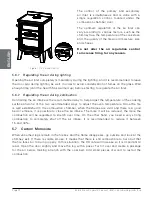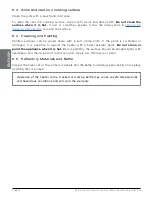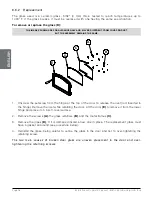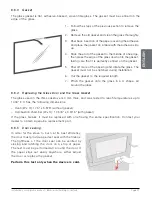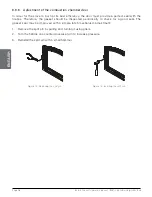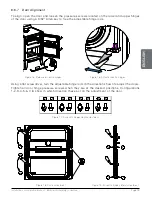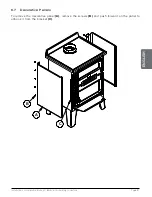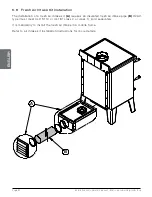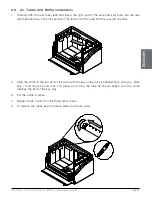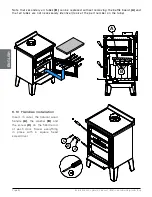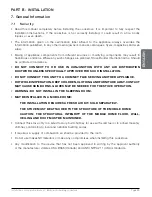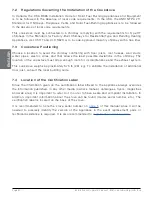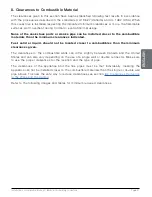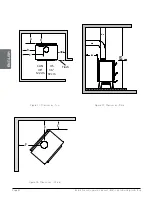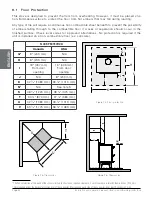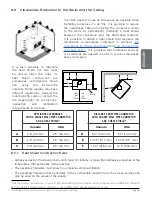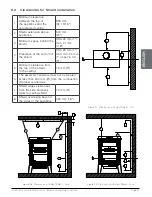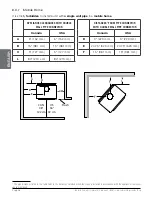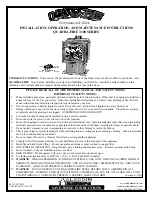
Page 35
Installation and operation manual - Bistro woodburning cookstove
ENGLISH
6.11 Mobile Home Installation
THE IMAGES SHOWN ARE FOR GUIDANCE ONLY AND MAY BE DIFFERENT FROM YOUR PRODUCT,
BUT THE ASSEMBLY REMAINS THE SAME.
For a stove on legs, install a plate
(L)
on each leg and screw it in place with the proper hardware
(M)
. Plates are included in the combustion chamber, but the proper hardware to screw the legs
in place is not included.
M
4x
L
4x
6.12 Exhaust System
Wood smoke can condense inside the chimney, forming a inflammable deposit called creosote.
If creosote builds up in the system, it can ignite when a hot fire is burned in the stove. A very
hot fire can progress to the top of the chimney. Severe chimney fires can damage even the best
chimneys. Smouldering, smoky fires can quickly cause a thick layer of creosote to form. When
the stove is operated properly, the exhaust from the chimney is mostly clear and creosote builds
up more slowly.
«Creosote - Formation and Need to Removal
When wood is burned slowly, it produces tar and other organic vapors, which combine with
expelled moisture to form creosote. The creosote vapors condense in the relatively cooler
chimney flue of a slow-burning fire. As a result, creosote residue accumulates on the flue
lining. When ignited this creosote makes an extremely hot fire.
The chimney connector and chimney should be inspected at least once every two months
during the heating season to determine if a creosote buildup has occurred. If a significant
layer of creosote has accumulated (
⅛
" [3 mm] or more) it should be removed to reduce the
risk of a chimney fire.»
Summary of Contents for DB04815
Page 2: ......
Page 38: ...Page 38 Installation and operation manual Bistro woodburning cookstove ENGLISH ...
Page 63: ...NOTES ...


